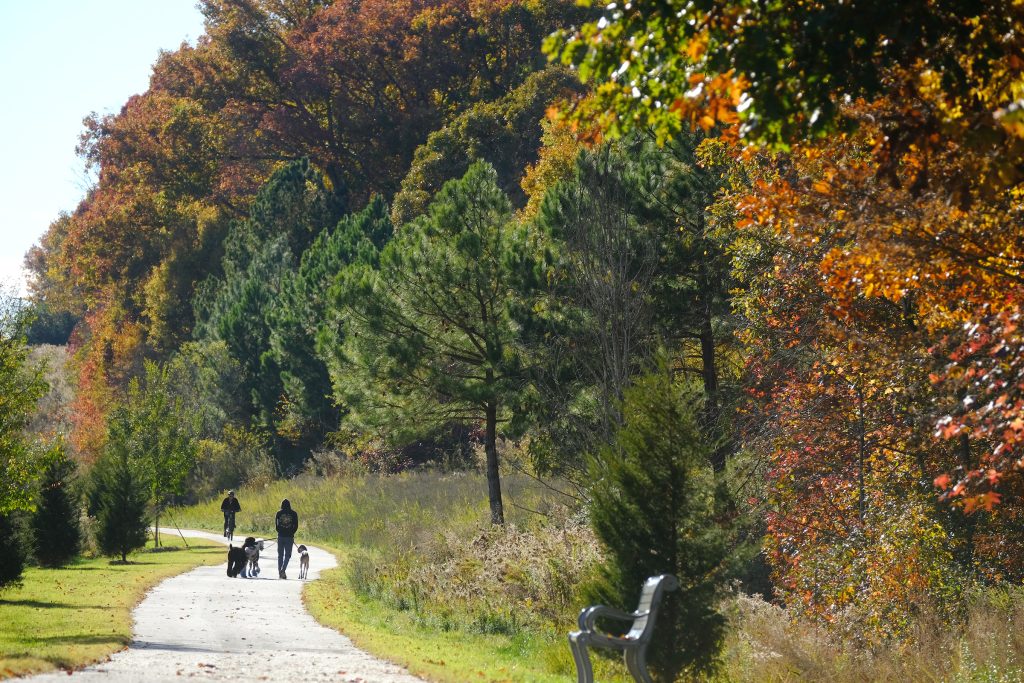When September arrives, fall color enthusiasts start to make travel plans to see this natural phenomenon in the mountains—but good news! Residents of Mecklenburg County can enjoy the striking tree display and stay close to home with a visit to a nearby greenway. A great number of deciduous trees call the Carolina Piedmont home and you can get up close to them on our trails.
Below are some species that will treat greenway visitors to show-stopping colors ranging from deep purple, fiery scarlet, and brilliant yellow. Fall color can start to show beginning in September and go until November, depending on location.

Red Maple (Acer rubrum) is a medium to large tree that can grow over 100 feet tall and lives in a variety of site conditions. It is abundant throughout our area. In the fall, its leaves typically turn a dark red, but variations in color do appear. On closer inspection, the leaves have three to five palmate lobes and a serrated margin.
Common Pawpaw (Asimina triloba) might be more well known for its late summer fruit, but its leaves also change color in the fall. This small tree grows in the understory beneath the forest canopy. Its leaves grow up to 12 inches long and turn yellow once the seasons start to change.
American Sweetgum (Liquidambar styraciflua), commonly referred to as a gumball or sticky-ball tree, is a medium to large tree. The “gumball” is the tree’s spiky spherical fruit that can drop and collect in large numbers below the tree, and once dried, are woody. In the fall, the tree’s star-shaped leaves turn from green to yellow, orange, red, and even purple.
Sycamore (Platanus occidentalis) is a large tree that thrives in full sun and moist soil. Its bark is scaly and has large leaves that can grow up to 9 inches wide. Their leaves change to shades of yellow and brown in the fall.
American Hornbeam (Carpinus caroliniana) grows in moist soil which is found at a lot of our greenways since they are often built beside streams and creeks. This understory tree is small to medium-sized, and its unique bark has the appearance of muscle, giving it one of its common names: musclewood. The leaves boast a yellow to orange-red color in the fall.

Campbell Creek Greenway, photo courtesy Mecklenburg County Parks and Recreation
These are just a few of the many deciduous species that live and thrive here! Plan a trip this fall to enjoy the changing of leaves along our greenways by visiting ParkandRec.MeckNC.gov. –by Megan Keul, Marketing Coordinator, Mecklenburg County Park and Recreation

0 Comments